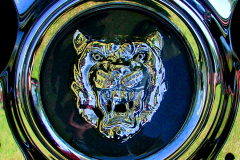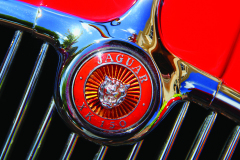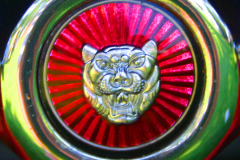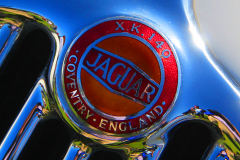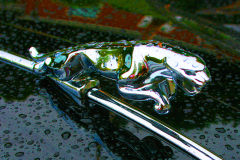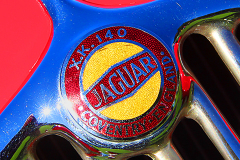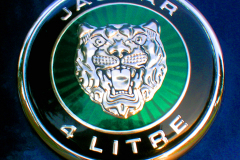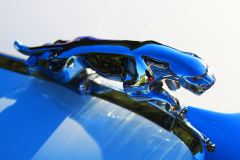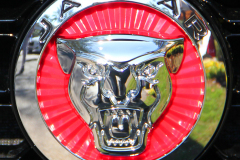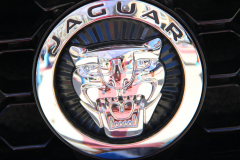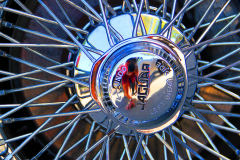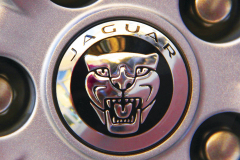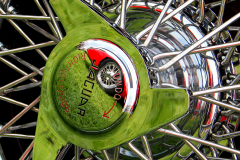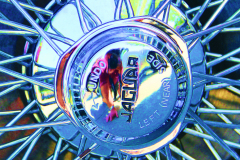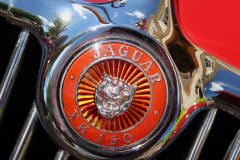Jaguar
Founded in 1922 by William Walmsly and William Lyons as the Swallow Sidecar Company, then renamed SS Cars Limited in 1935. The name was finally changed to Jaguar Cars Limited in 1945 due to the similarity of its SS marque with the similar insignia of the Nazi SS. The name Jaguar was meant to symbolize the core values pursued by the company – grace, elegance, performance, power and ambition to move forward.
Jaguar purchased The Daimler Company Limited (an independent British motor vehicle manufacturer) in1960 and, from the late 1960s, Jaguar used the Daimler marque as a brand name for their most luxurious saloons. The Daimler V8-250 (1962-1969), four-door saloon, became the most popular car Daimler ever produced.
Jaguar merged with the British Motor Corporation in 1966 forming British Motor Holdings, which in 1968 merged with Leyland Motor Corporation becoming British Leyland, itself nationalized in 1975. In 1984 Jaguar was spun off from British Leyland and was listed on the London Stock Exchange. Jaguar was acquired by Ford in 1990 and then sold to Tata Motors in 2008.
Jaguar first appeared in 1935 as a model name on a Jaguar SS 2½-litre sports saloon. A matching open two-seater sports model with a 3½-litre engine was named Jaguar SS 100. In 2010, a 1937 Jaguar SS100 was sold for $1 m. It was on an SS100 that the famous Jaguar ‘leaper’, the marque’s signature feline hood ornament, was first displayed.
Jaguar has produced a number of amazing cars during its history – some iconic and famous models include:
The Jaguar XK series was introduced in 1948 with the Jaguar XK120, the first sports car the company produced since it stopped making the Jaguar SS 100 in 1940. Named after its top speed it was the fastest production car available at the time. This was followed by the Jaguar XK140 in 1955 and the Jaguar XK150 in1958.
Jaguar’s 1950s slogan was – Grace-Space-Pace and its mantra was “Value For Money”.
Jaguar won the Le Mans 24 hours race in 1951,1953, 1955, 1956 and 1957.
The Jaguar Mark VII (1951-1953) was a four-door luxury car, powered by the newly developed XK engine, first seen the 1948 Jaguar XK120. It was the first Jaguar to be made available with an optional automatic transmission. The Jaguar Mark VII was successful in racing and rallying – a Jaguar Mark VII M version won the Monte Carlo Rally in 1956.
In 1956, due to the Suez Crisis, Britain anticipated fuel rationing and Jaguar switched focus to their smaller saloons. The Jaguar Mark I, mid-size executive saloon, was introduced in 1955 and an improved version, the Jaguar Mark II in 1959, using the same engine as the soon to be released XKE.
The Jaguar XKSS was a road-going version of the Jaguar D-Type racing car, initially built in 1957. The XKSS is one of the most sought after Jaguar cars, as only 16 were produced due to a fire that broke out at the factory. One 1957 XKSS that had been completely restored, with only 24,850 miles, was sold at auction for $1.925 m. Steve McQueen’s XKSS is estimated to be worth $30 m. In 2016, Jaguar publicly announced that they would finally build the remaining 9 XKSSs from scratch. The expected selling price will be approximately $1 m each.
The voluptuous and iconic Jaguar E-Type (1961-1975) was also known as the XKE. In 2008 the Jaguar E-type ranked first in The Daily Telegraph “100 most beautiful cars of all time” and number one on the Sports Car International Magazine’s “Top Sports Cars of the 1960’s”. In 2004, Enzo Ferrari famously declared the XKE to be the “most beautiful car ever made”.

